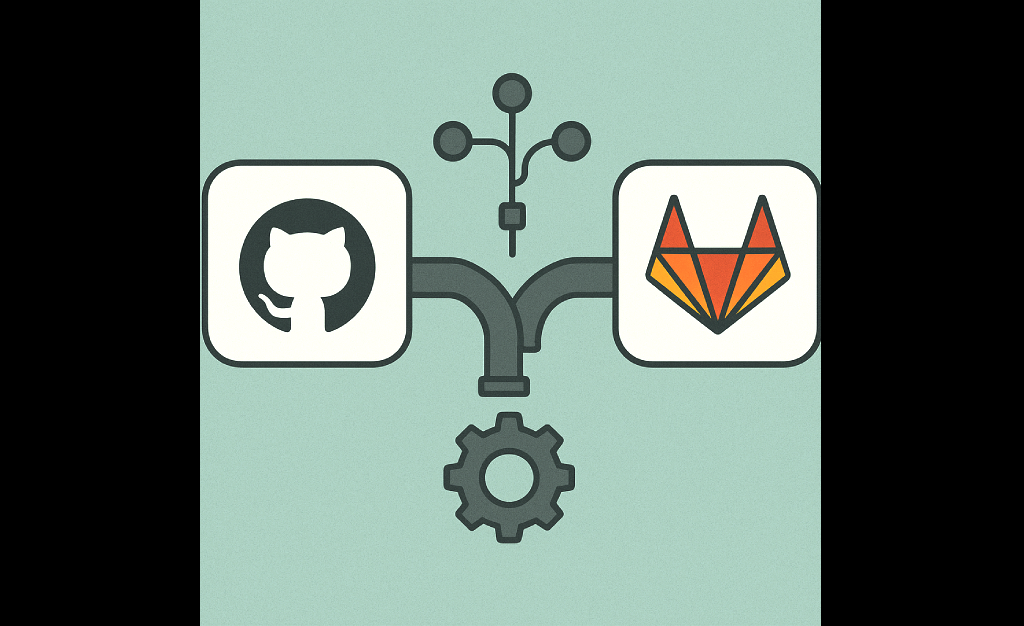Modern software development thrives on automation — and CI/CD pipelines are the engine behind fast, reliable, and frequent software delivery. If you’re hosting your code on GitHub or GitLab, you already have access to powerful native CI/CD tools:
GitHub Actions (built into GitHub)
GitLab CI/CD (built into GitLab)
But how do they compare? And how do you build a CI/CD pipeline in each?
Let’s break it down.
What is CI/CD (Quick Recap)?
CI (Continuous Integration): Automatically builds and tests code when you push changes.
CD (Continuous Delivery/Deployment): Automatically prepares and/or deploys your code to staging or production.
CI/CD pipelines:
Reduce human error
Speed up delivery
Improve software quality
Both GitHub Actions and GitLab CI/CD are automation engines that make this possible — directly in your code hosting platform.
GitHub Actions vs GitLab CI/CD (Quick Comparison)
| Feature | GitHub Actions | GitLab CI/CD |
|---|---|---|
| Integration | Native to GitHub | Native to GitLab |
| Pipeline File Name | .github/workflows/*.yml | .gitlab-ci.yml |
| Free Tier | 2,000 minutes/month (private) | 400 minutes/month (free plan) |
| Runners (Agents) | GitHub-hosted or self-hosted | GitLab-hosted or self-hosted |
| UI Experience | Modern and integrated | Powerful and robust |
| Flexibility | High, with matrix builds | High, supports advanced DAGs |
| Best For | GitHub-based projects | GitLab-based codebases |
How CI/CD Works in GitHub (GitHub Actions)
Step-by-Step Setup
Create Workflow Folder
Inside your GitHub repo, create:.github/workflows/Add a Workflow File
<pre><code># File: .github/workflows/ci.yml
name: CI Pipeline
on:
push:
branches: [ main ]
pull_request:
branches: [ main ]jobs:
build:
runs-on: ubuntu-lateststeps:
– uses: actions/checkout@v3– name: Install dependencies
run: npm install– name: Run tests
run: npm test
</code></pre>
</div>3. Push Code
Every time you push code or open a pull request, the pipeline will run and appear in the Actions tab of your GitHub repo.
How CI/CD Works in GitLab (GitLab CI/CD)
Step-by-Step Setup
Add
.gitlab-ci.ymlFile
Place this file in the root of your GitLab repo:<pre><code># File: .gitlab-ci.yml
stages:
– build
– testbuild_job:
stage: build
script:
– npm install
– npm run buildtest_job:
stage: test
script:
– npm test
</code></pre>Push CodeGitLab automatically detects the
.gitlab-ci.ymlfile and kicks off the pipeline.- View Pipeline
You can view real-time pipeline status under the CI/CD > Pipelines section in your GitLab project dashboard.
Which Should You Use?
| Use Case | Recommended Platform |
|---|---|
| Your repo is hosted on GitHub | GitHub Actions |
| Your repo is hosted on GitLab | GitLab CI/CD |
| You need free and easy pipelines | GitHub (for public repos) |
| You want advanced pipeline graphs | GitLab |
| You like YAML automation in PRs | GitHub |
| You need tight GitLab ecosystem (issues, merge requests, etc.) | GitLab |
Tips for Both Platforms
Use secrets: Store API keys and passwords securely in GitHub/GitLab secrets.
Use caching: Speed up pipelines by caching
node_modules,vendor, or build folders.Break into jobs: Use separate jobs for linting, building, testing, and deploying.
Add notifications: Integrate with Slack, Discord, or email to receive status alerts.
Final Thoughts
Whether you use GitHub Actions or GitLab CI/CD, the key is this:
Automate your delivery pipeline early. It saves time, prevents bugs, and keeps your team moving fast.
Both platforms are powerful, customizable, and offer free usage tiers that are perfect for solo developers, open-source maintainers, and teams of all sizes.
Reads also:
External Resources:
